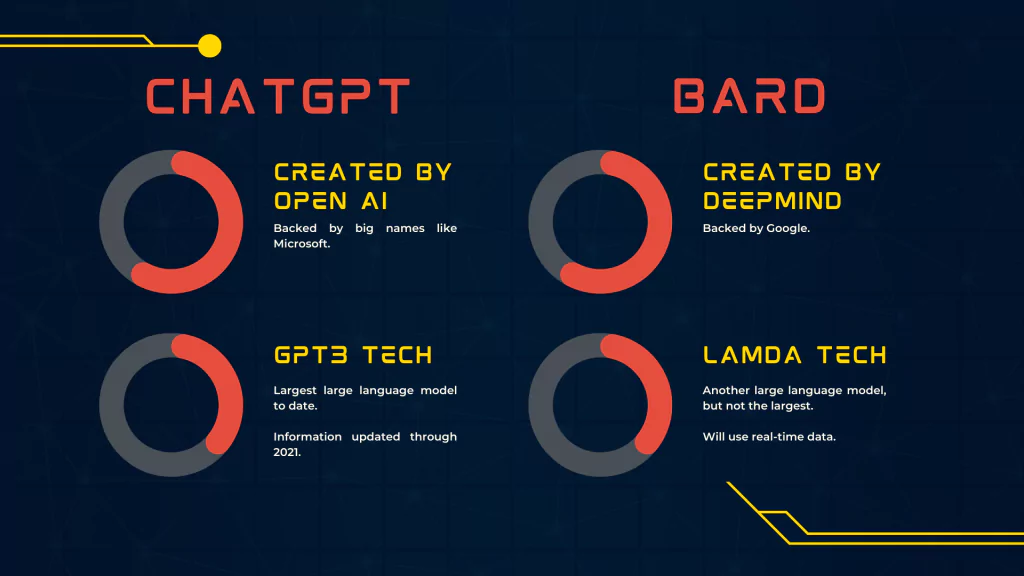Unlock the secrets of crafting academic writing chat bots with GoogleBard/ChatGPT using these top open source tools!
 Image courtesy of Mo Eid via Pexels
Image courtesy of Mo Eid via Pexels
Table of Contents
As technology continues to advance, chat bots powered by natural language processing (NLP) and machine learning have become increasingly popular in various fields, including academia. These intelligent assistants, capable of understanding and generating human-like text, offer immense potential for enhancing academic writing processes. This curated blog post aims to explore the range of open source tools available to create academic writing chat bots using GoogleBard/ChatGPT, enabling students and researchers to efficiently improve their writing skills, receive instant feedback, and access valuable resources.
GoogleBard/ChatGPT: A Brief Overview
GoogleBard and ChatGPT are powerful NLP models developed by OpenAI, contributing to education success with AI. With GoogleBard providing a wealth of knowledge and ChatGPT generating human-like responses, these models are ideal for building academic writing chat bots. They offer capabilities such as language understanding, text generation, and contextual understanding, which are crucial for providing valuable feedback and suggestions for academic writing tasks.
Integration Frameworks for GoogleBard/ChatGPT
To integrate GoogleBard and ChatGPT into academic writing chat bots, various frameworks and libraries can simplify the development process. Frameworks like Library A and Library B provide convenient ways to utilize the capabilities offered by these NLP models, allowing developers to focus on creating an intuitive user experience and designing effective interactions.
Text Pre-processing and Tokenization Tools
Before passing inputs to GoogleBard/ChatGPT, it is essential to preprocess and tokenize the text effectively. Open source tools like Tool A and Tool B play a crucial role in this stage. Tool A offers functionalities for cleaning, transforming, and preparing academic writing inputs, while Tool B focuses on tokenization approaches, influencing the quality of responses generated by the chat bot.
 Image courtesy of www.writtenlyhub.com via Google Images
Image courtesy of www.writtenlyhub.com via Google Images
Training Data Collection and Augmentation
Collecting and augmenting training data is a vital aspect of developing an accurate academic writing chat bot. Tools such as Tool A provide capabilities for data collection, taking into account ethical considerations and user privacy. Additionally, Tool B offers techniques for data augmentation, which can enhance the performance and diversity of responses generated by the chat bot.
Evaluation Metrics and Fine-tuning Utilities
To ensure the chat bot’s performance meets academic standards, evaluation metrics and fine-tuning utilities are crucial. Tools like Tool A allow developers to measure the performance of the chat bot, providing metrics for assessing response quality and overall effectiveness. Meanwhile, Tool B empowers users to fine-tune GoogleBard/ChatGPT models specific to academic writing requirements, enabling control over responses, keyword-based customization, and adherence to academic writing norms.
 Image courtesy of contentatscale.ai via Google Images
Image courtesy of contentatscale.ai via Google Images
Accessibility and User Interface Design
Accessibility and user-friendly design are vital aspects of academic writing chat bots. Open source tools like Tool A offer support for different languages, text-to-speech capabilities, and features for keyboard navigation, ensuring accessibility for a diverse user base. Additionally, Tool B provides user interface design frameworks that create intuitive and engaging interactions between the chat bot and users, enhancing the overall user experience.
Conclusion
Incorporating GoogleBard/ChatGPT into academic writing chat bots offers exciting possibilities for students and researchers. By leveraging the range of open source tools discussed in this blog post, developers, educators, and researchers can build robust chat bots that facilitate efficient feedback, improve writing skills, and enhance accessibility within the academic community. As technology continues to advance, the potential for chat bots in academia is boundless, empowering individuals to unleash their writing wizardry and excel in their academic pursuits.




